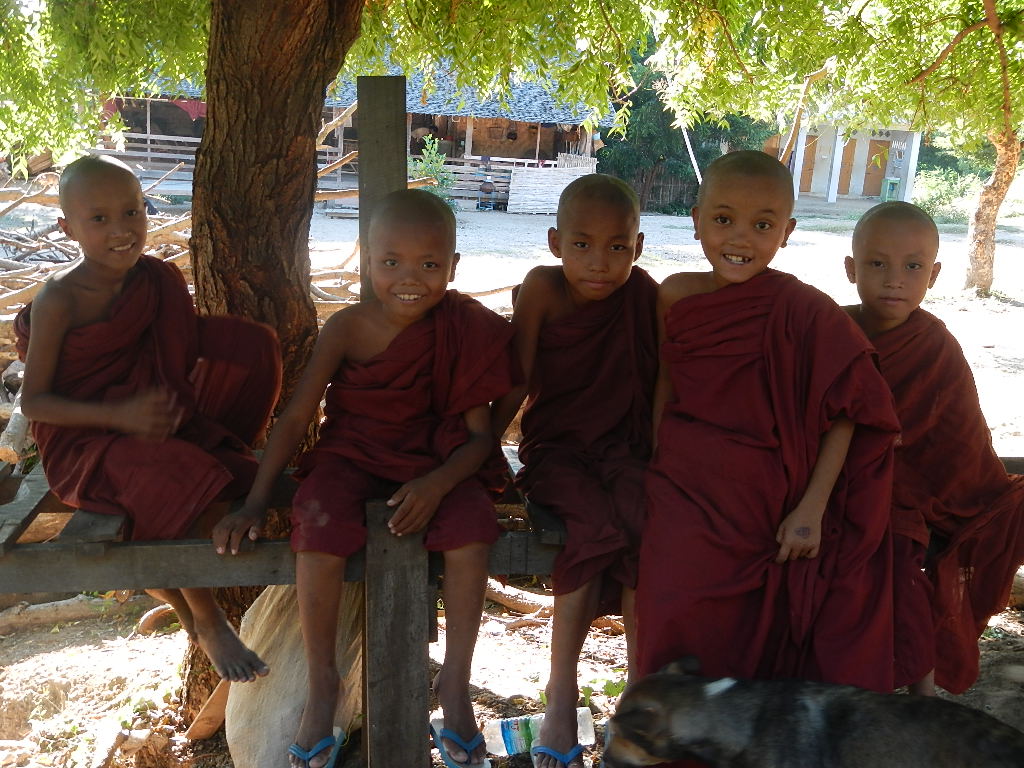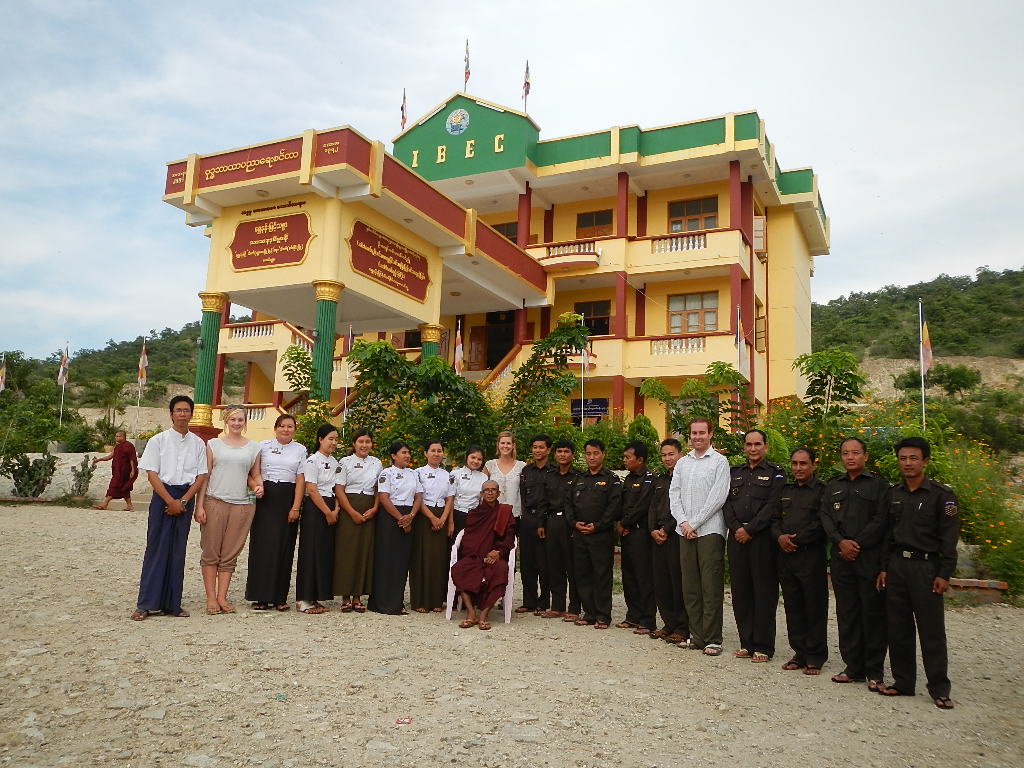A bell tolls from a nearby temple, welcoming the rising sun as it seeps through the valleys, illuminating one pagoda at a time. Dawn marks the hours of alms for the novices that inhabit the hundreds of monasteries and nunneries of Sagaing, the holy center of Myanmar. I watched through the bamboo thatches of my hut as the novices at the IBEC (International Buddhist Education Center) descended the hill with their bowls, some balanced on their head, others falling into their hands. The younger novices struggled to keep their robes tied properly around their shoulders as they ran to keep up with the monks. They were heading to the town to ask the villagers to contribute “alms”, gifts to the monastery. It is these alms and contributions that the holy centers survive on.
I had been living and teaching at the IBEC for two weeks now, participating in the daily rituals of the novices and learning about the pillars of Buddhism. As one of two westerners, and the only woman at the monastery, there is a lot to learn quickly. The principal, a highly respected monk, welcomes me and thanks me for coming. When addressing the principal, one must sit lower than him, with their feet tucked in, as a sign of respect. When he walks through the monastery grounds, people bow on the ground to him. Every morning the monks and nuns come to pay their respect from neighboring monasteries. They kneel before him and bow their heads three times.
The IBEC gives free education to children from all over Myanmar. A lot of poorer families will send their children to become monks because it is the only education they can receive. Walking around the monastery, the children hang out of the windows exclaiming, “hello teacher, hello!” The novices range in age from three to eighteen. They wake up every morning at 4am for their morning chants and alms, go to school until 5pm, study from 5-9pm and pray until bedtime. It’s a tight schedule with little playtime. Teachers are highly respected and the young novices are extremely eager to learn. At the end of every class, they repeat, “thank you teacher, see you tomorrow teacher, thank you teacher.” The nuns also attend various classes at the monasteries. These bashful girls always sit in the back of the classroom and are easily identifiable with their bright pink robes and shaved heads. The boys and girls move in and out of the classroom separately. Gender roles become increasingly apparent when you go into town. Only men are seen eating at the restaurants and women are assumed to be home working.
The local teachers are mostly women and eager to practice their English. Each day they rub thanaka on my cheeks, a white paste made from a tree root, used to protect skin from the sun. In town, the villagers welcome the teachers with open arms. During a “food festival”, each house cooks an enormous meal and participants wander from house to house as a way to socialize with the village. When someone shares a meal with the Burmese, they are considered part of the family. I join over 30 families during my time in Myanmar.
The Burmese culture is infamous for their warm smiles and generosity. A once isolated country; its borders have now been opened to businesses and tourists alike. Aside from teaching novices, I help Burmese immigration officers improve their spoken English. They are required by the government to learn English to prepare for the influx of foreigners. At the end of my two weeks there, I am showered with gifts from my students. I leave the center feeling that I had received much more than I had given to them. This is quite common in Buddhist and Burmese culture, that is the spirit of giving more then you receive.
~ By Teresa Murphy of Tess Travels. Murphy spent three weeks living and teaching at a Buddhist monastery in the holy capital of Sagaing, Myanmar.


